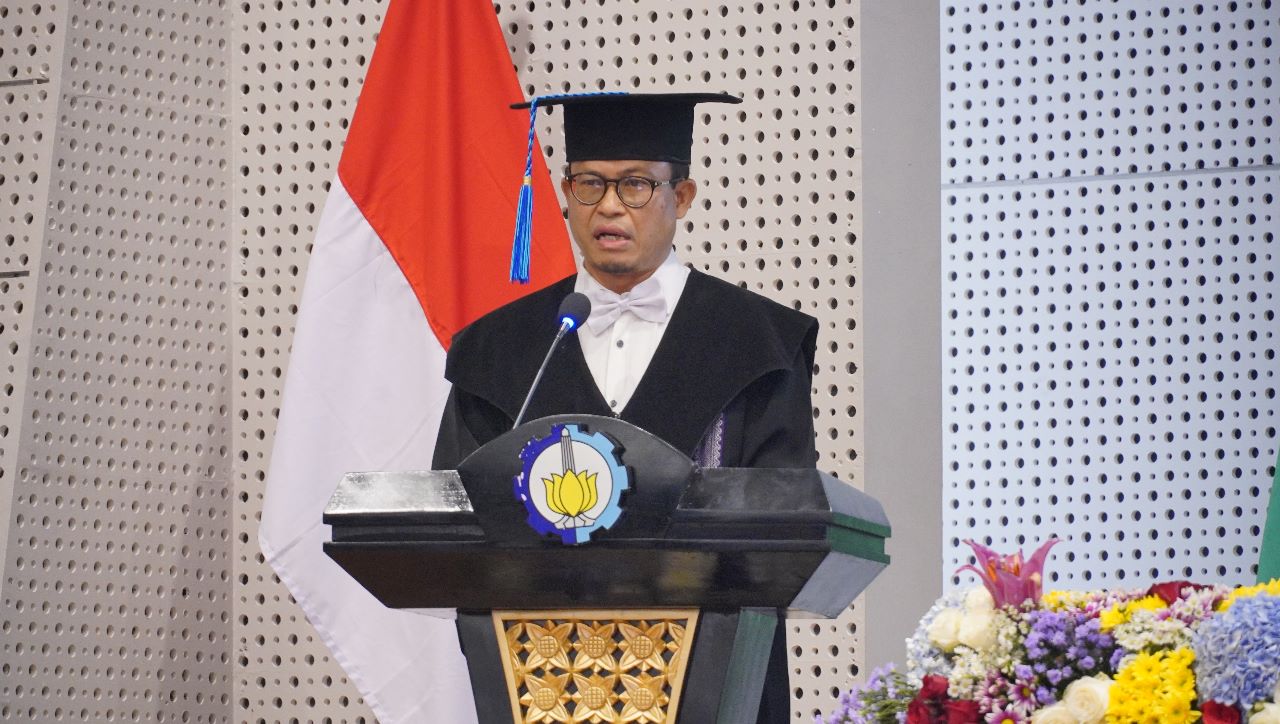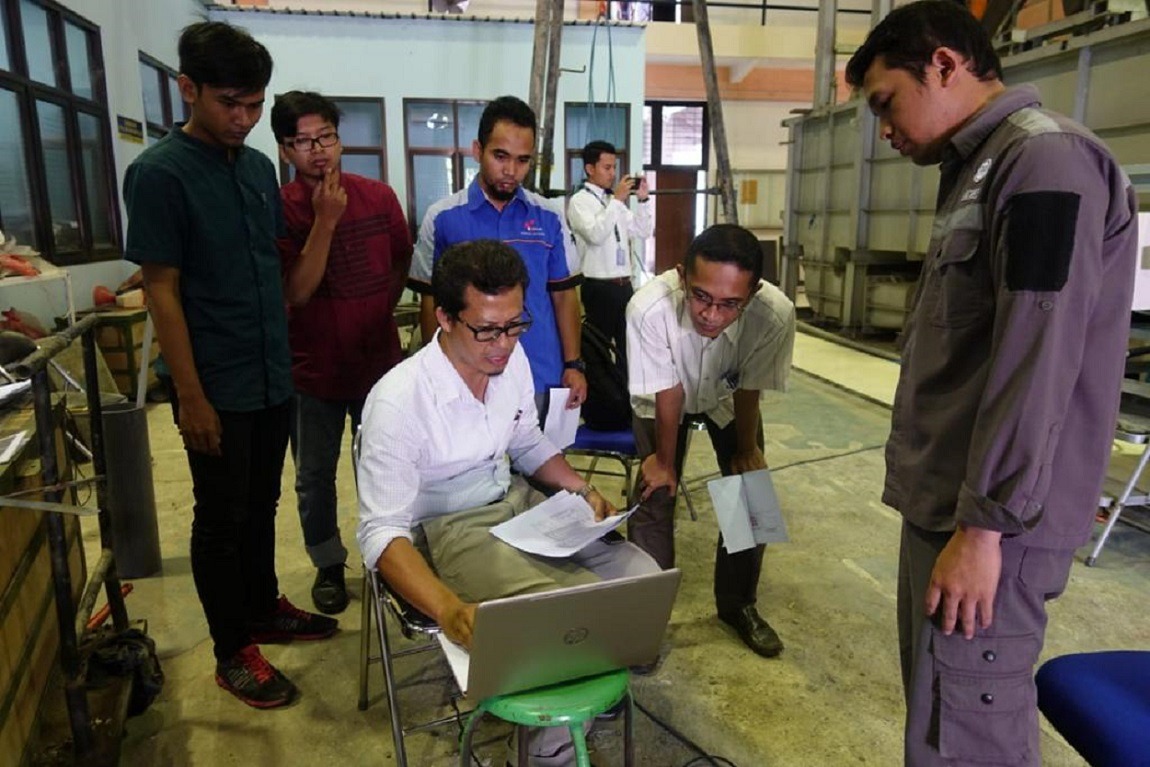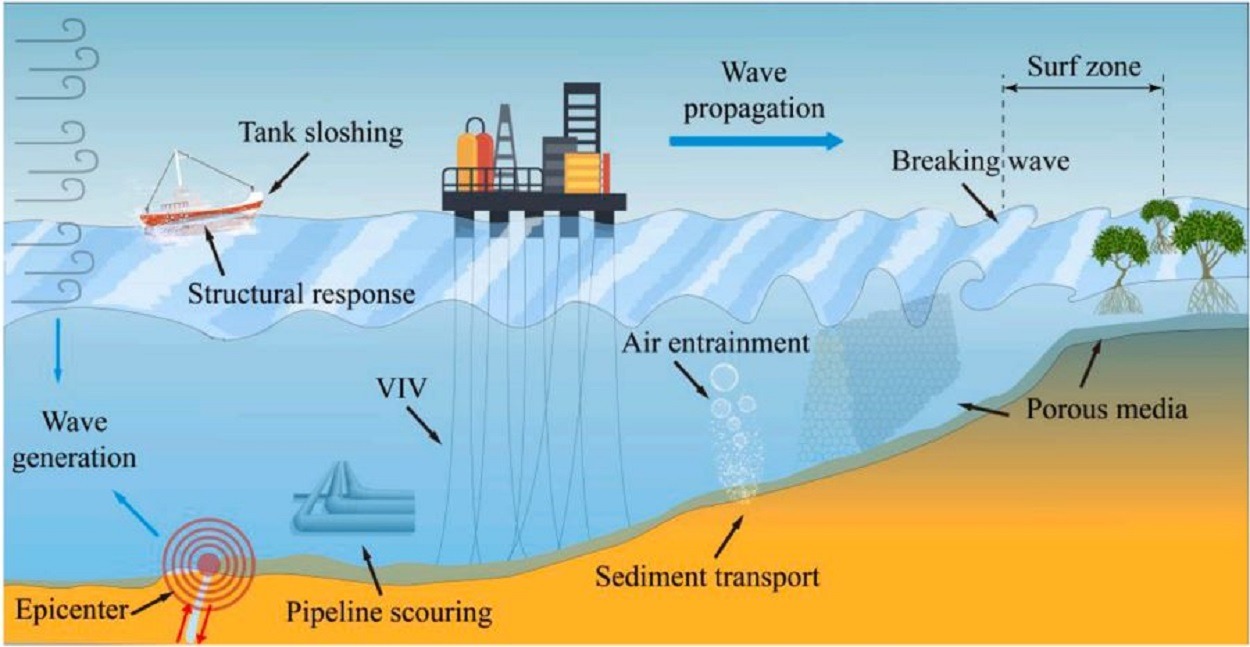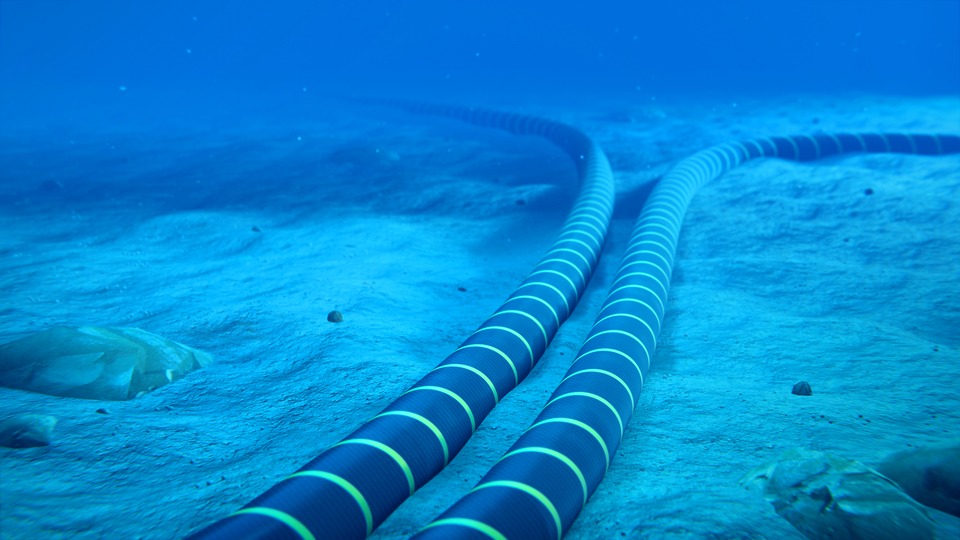ITS Professor Develops an International Reference Formula for Predicting Sea Sediment Movement

Prof Suntoyo ST MEng Ph.D. from the Department of Marine Engineering when presenting his scientific oration at the ITS Professor Inauguration Ceremony on October 12, 2022
Campus ITS, ITS News – The movement of seafloor sediments by wave movements and irregular currents can affect the foundations of buildings and infrastructure built on the coast. Moving on from this, one of the professors from the Department of Marine Engineering, Faculty of Marine Technology (FTK) Institut Teknologi Sepuluh Nopember (ITS), Prof. Suntoyo ST MEng Ph.D. succeeded in developing a formula to determine the movement of sediment on the seabed.
In the beginning, Suntoyo explained, the changing movement of waves and ocean currents caused a shift in sediment or soil on the seabed. If countermeasures are not carried out properly, this will have an impact on planning the construction of marine building foundations that are less strong. “Therefore, it is necessary to develop formulas for bed shear stress and sediments,” said the man from Blora regarding his scientific oration during the professor’s inauguration last Wednesday (12/10).

Prof Suntoyo ST MEng Ph.D. (white shirt sitting) while conducting observations and research in the field of hydrodynamics and sediment transport
Furthermore, the 150th ITS professor said, in theory, there are four waves in the sea: non-linear waves, asymmetrical waves, irregular waves, and waves and currents. By combining the four types of locks with the base shear stress formula, Suntoyo obtained an accurate value for calculating sediment displacement.
The innovations in developing these formulas include non-linear wave base shear stress formulas, asymmetric wave bed shear stress formulas, irregular wave bed shear stress formulas, and wave-current combination basic shear stress formulas. “I’m sure the development of this formula will be able to get more accurate results than previous studies,” he said optimistically.

Illustration of wave and current movement process in coastal areas (source: research journal Min Luo et al.)
The man, born on July 23, 1971, said that the development of this formula helps manage coastal areas and planning developments at sea, such as building docks. Through these formulas, sediment movement on the seabed can be known so that the product can be carried out efficiently and reduce high costs.
The development of this formula is also used as a method of overcoming sediment scour for laying pipes or cables on the seabed. Suntoyo revealed that the line or thread would be damaged more quickly if sediment erosion occurred. “With accurate calculations and formulas, there will be no broken pipes or cables due to sediment shifts,” he emphasized once again.

Illustration of cabling on the seabed as well as the implementation of innovations in the development of bed shear stress formulas and sediment transport (source: jagalaut.id)
Suntoyo admitted that the development of the formula had been published in a research journal on sediment transport in 2008. He acknowledged that many international marine experts, such as from Australia, the Netherlands, Italy, Japan, and Spain, had been assisted by his research. He hopes to contribute to solving maritime problems for the nation through his perseverance and innovation in the marine field. (ITS PR)
Related News
-
ITS Wins 2024 Project Implementation Award for Commitment to Gender Implementation
ITS Campus, ITS News —Not only technology-oriented, Institut Teknologi Sepuluh Nopember (ITS) also show its commitment to support gender
October 14, 2022 13:10 -
ITS Professor Researched the Role of Human Integration in Sustainable Architecture
ITS Campus, ITS News –The developing era has an impact on many aspects of life, including in the field
October 14, 2022 13:10 -
ITS Sends Off Group for Joint Homecoming to 64 Destination Areas
ITS Campus, ITS News — Approaching Eid al-Fitr, the Sepuluh Nopember Institute of Technology (ITS) is once again facilitating academics who want
October 14, 2022 13:10 -
ITS Expert: IHSG Decline Has Significant Impact on Indonesian Economy
ITS Campus, ITS News — The decline in the Composite Stock Price Index (IHSG) by five percent on March 18,
October 14, 2022 13:10
